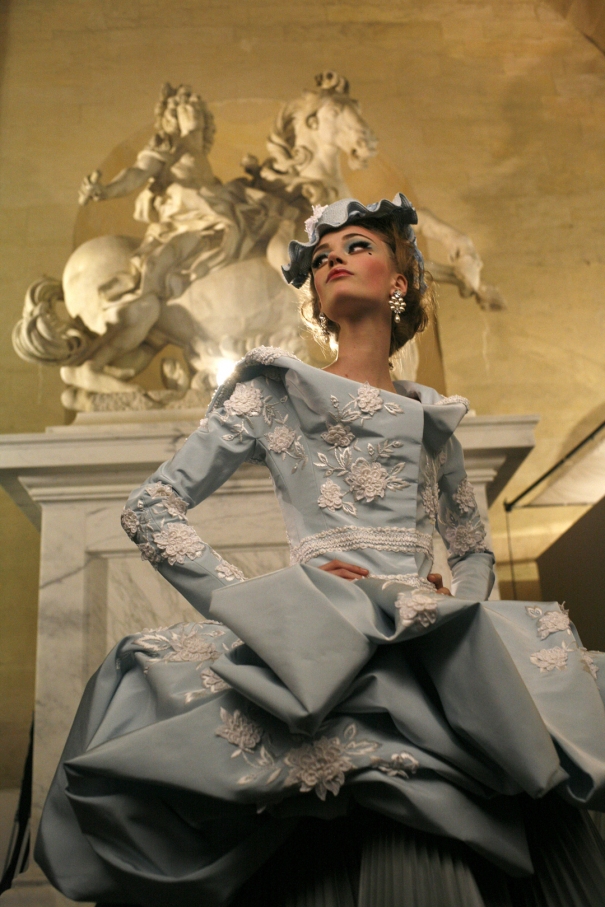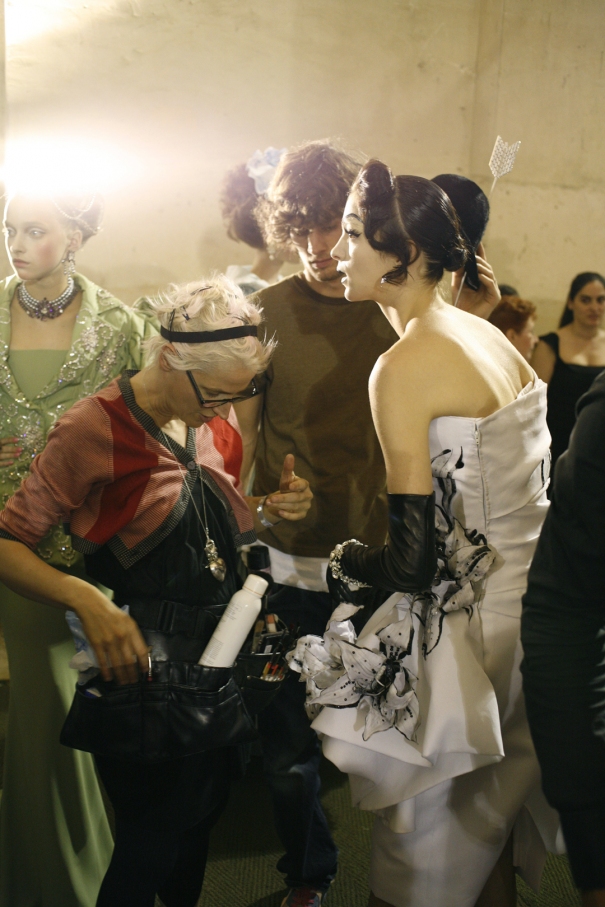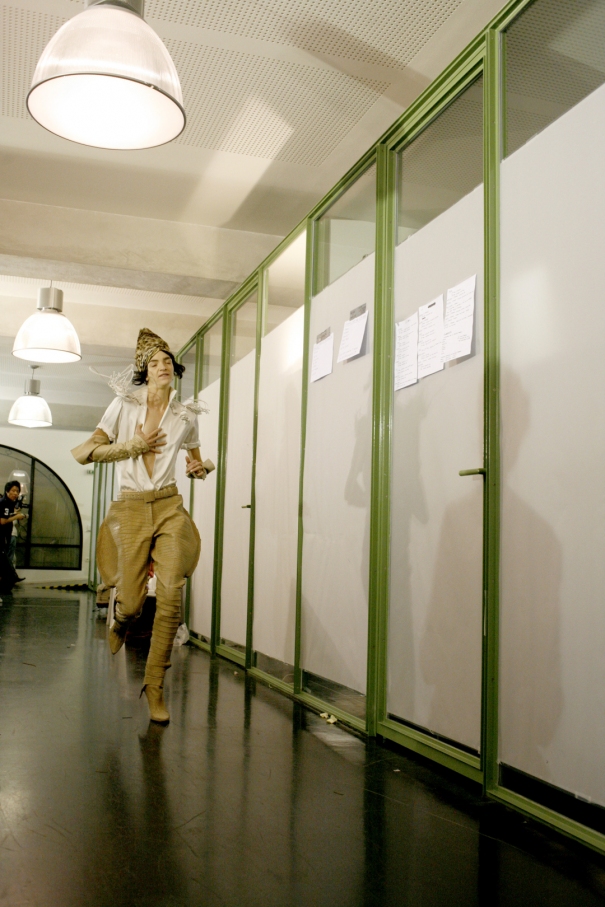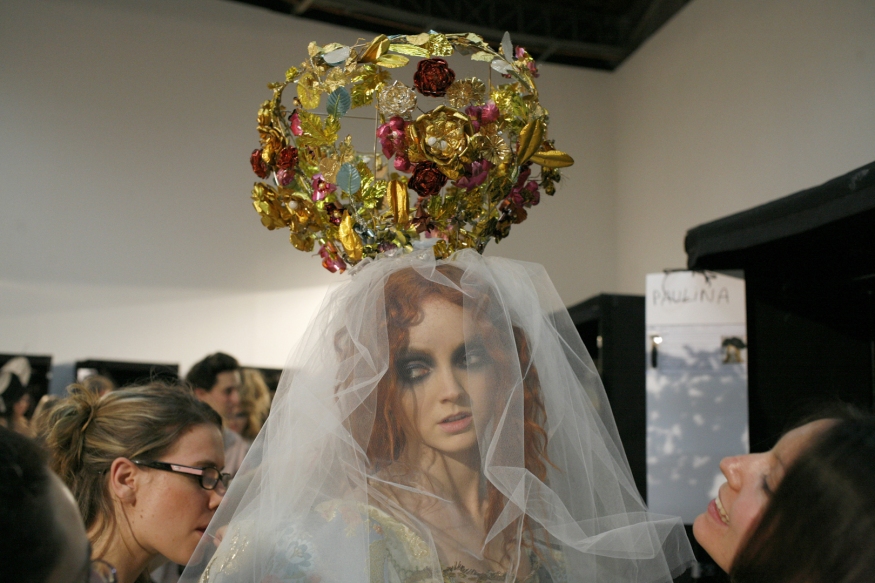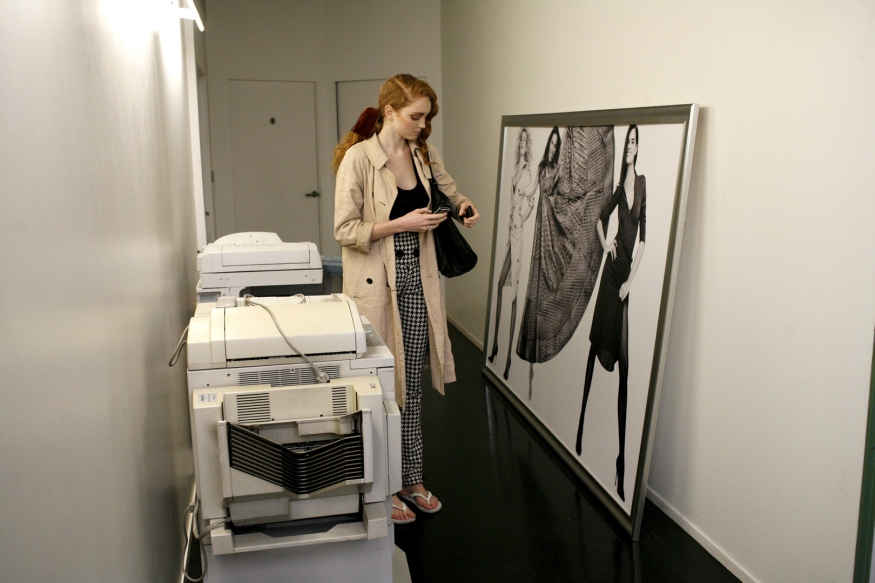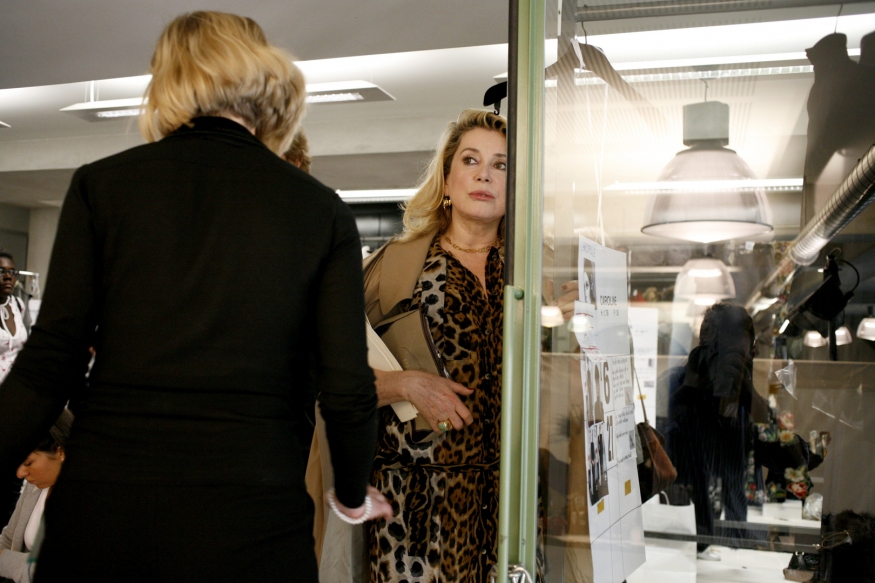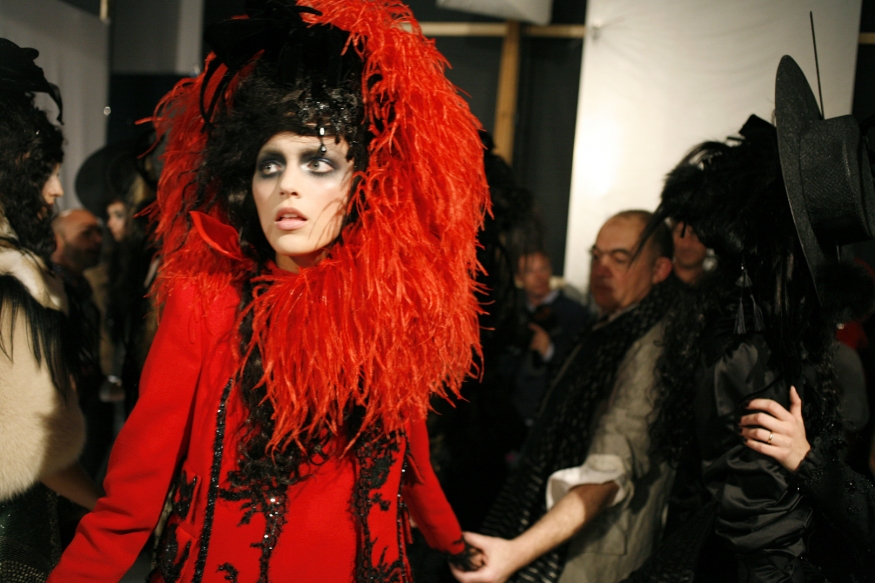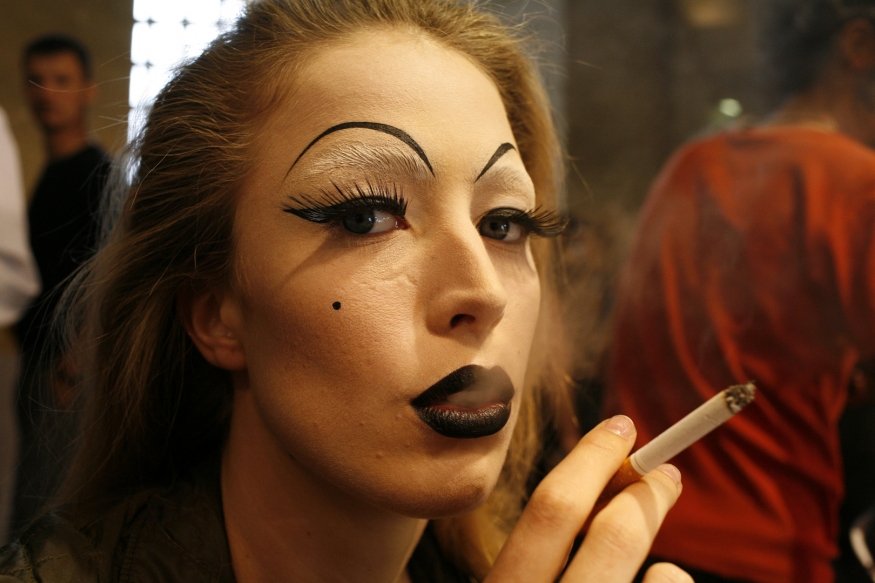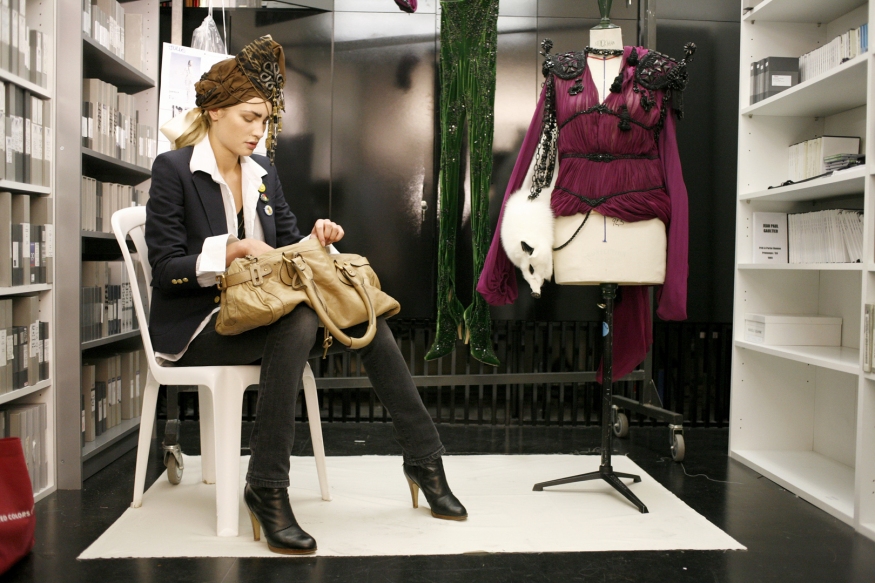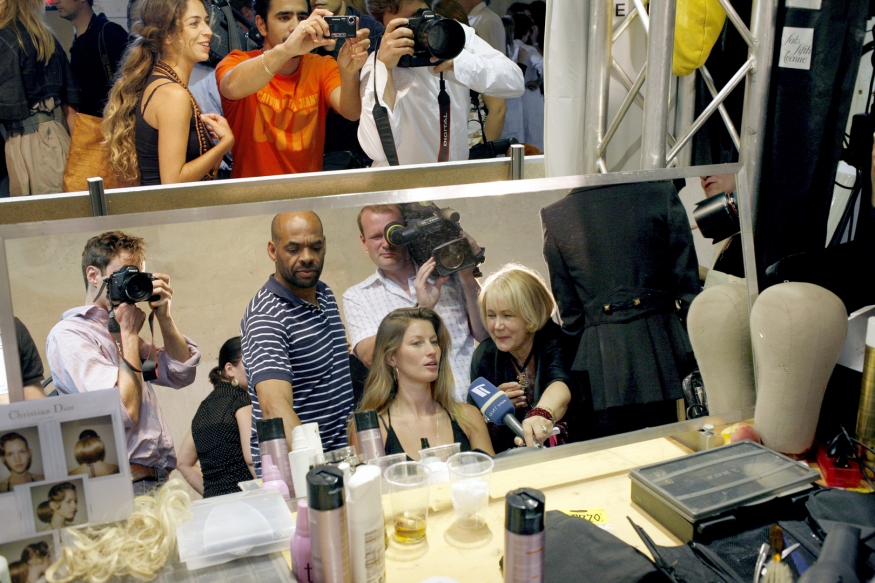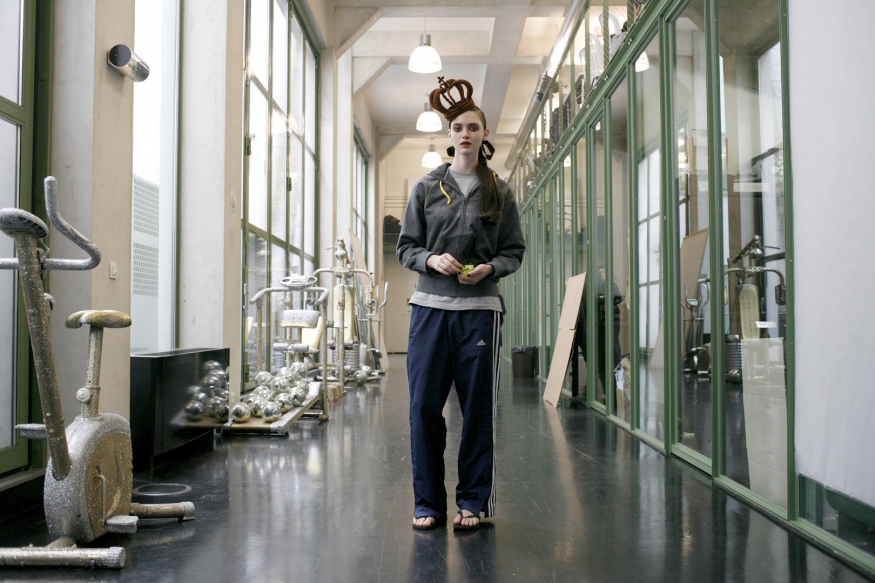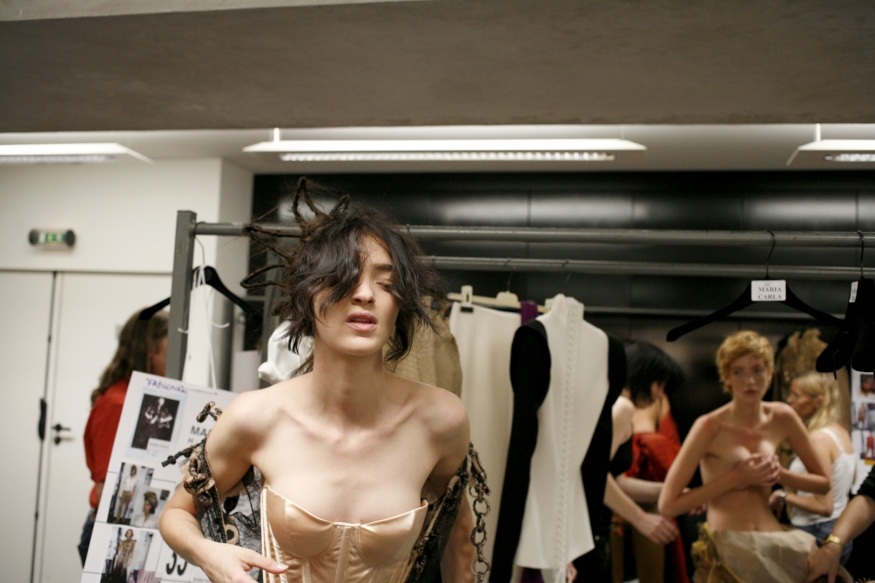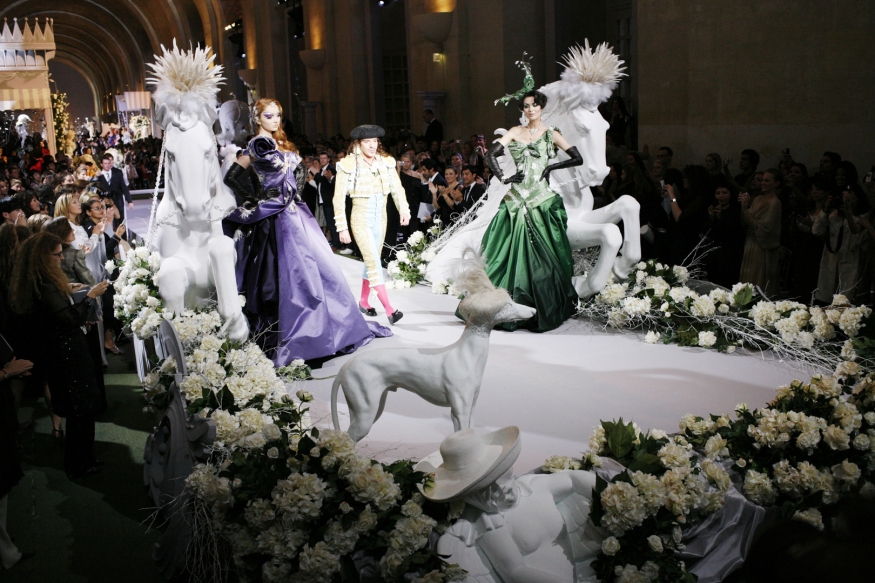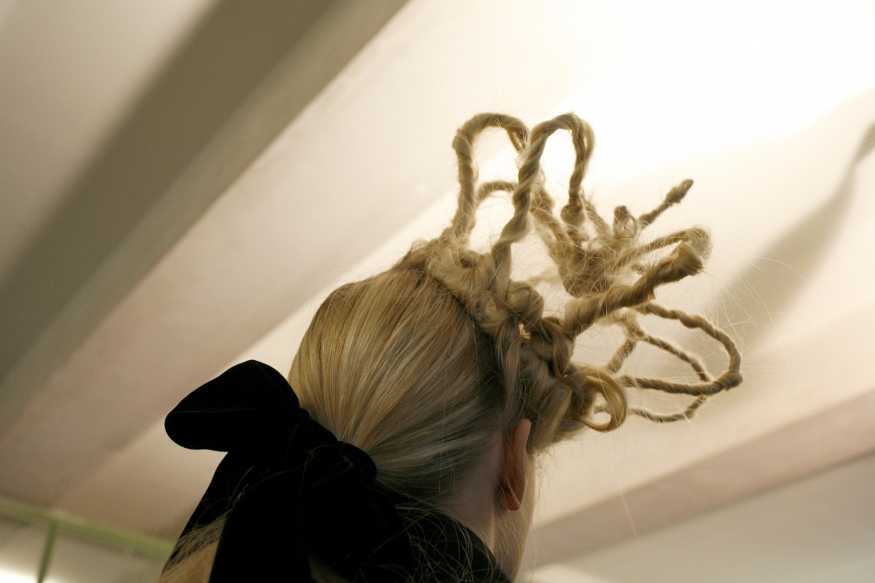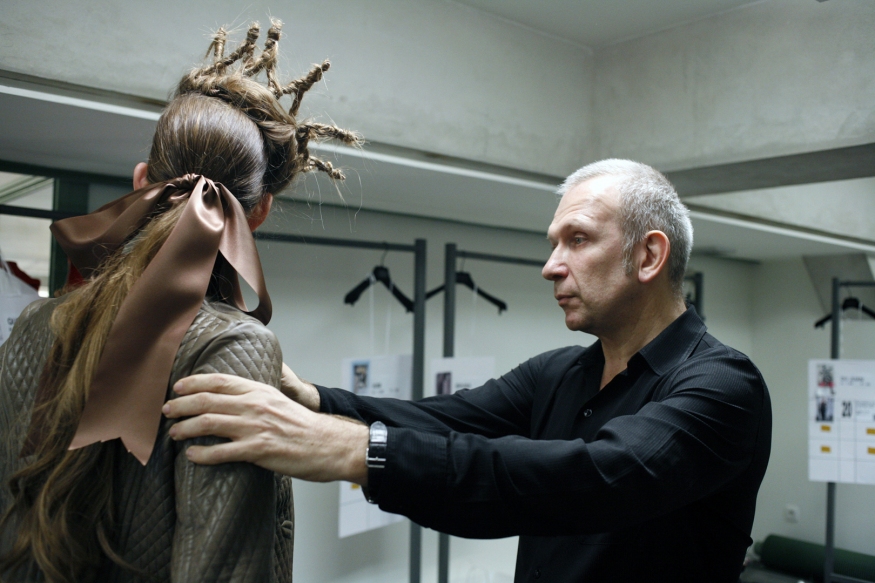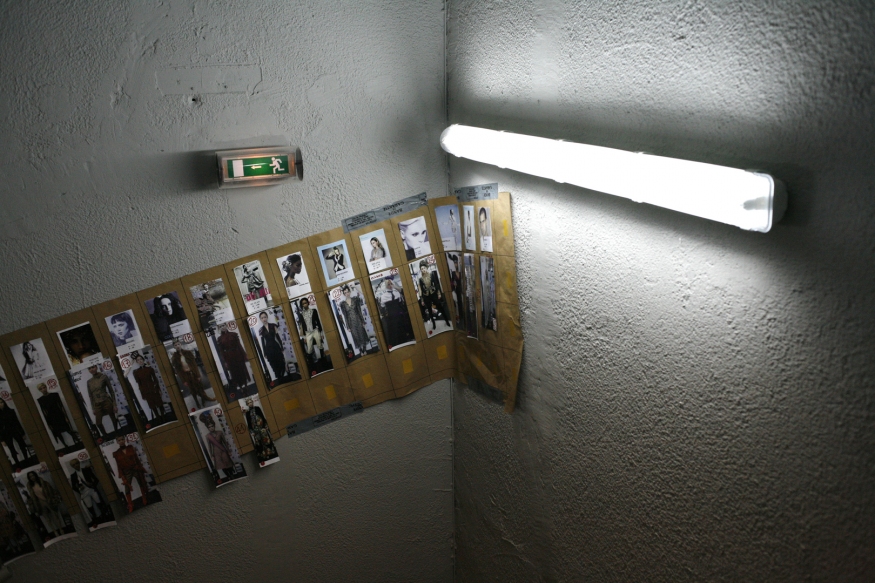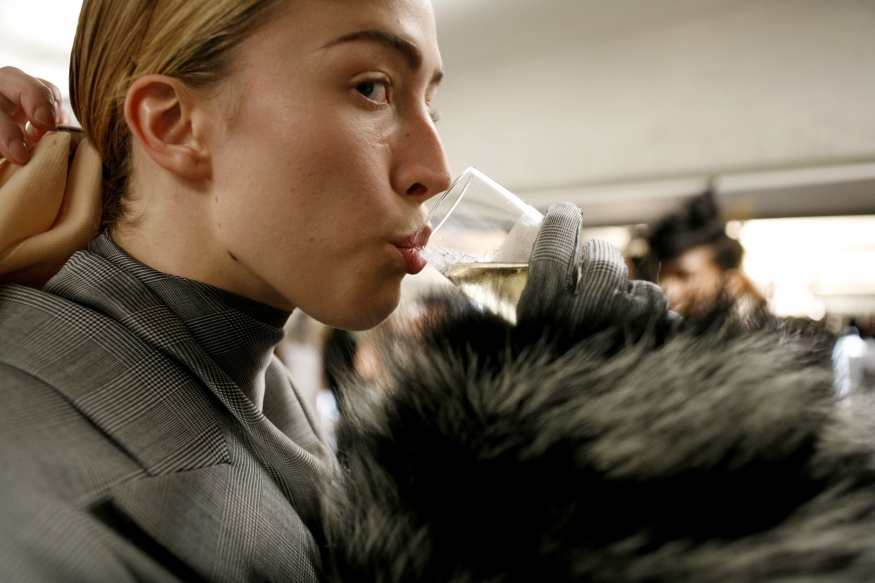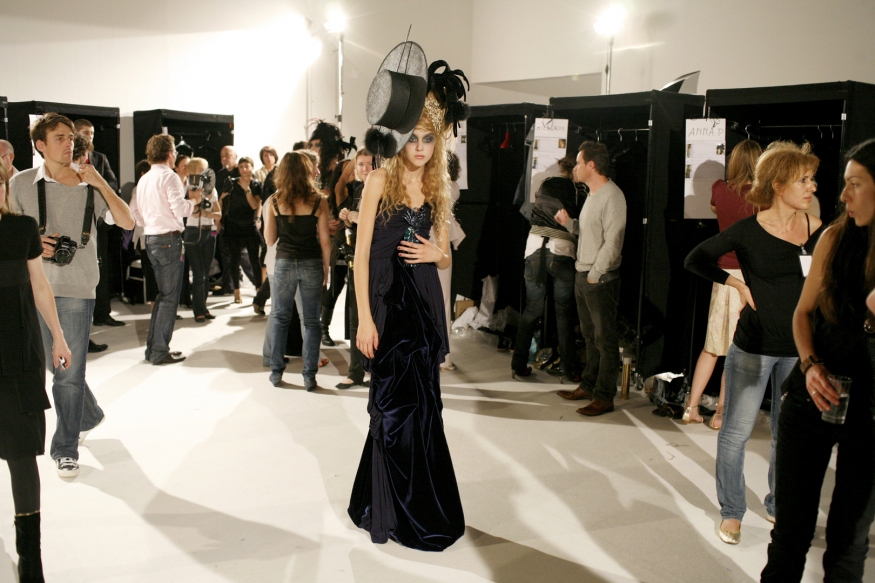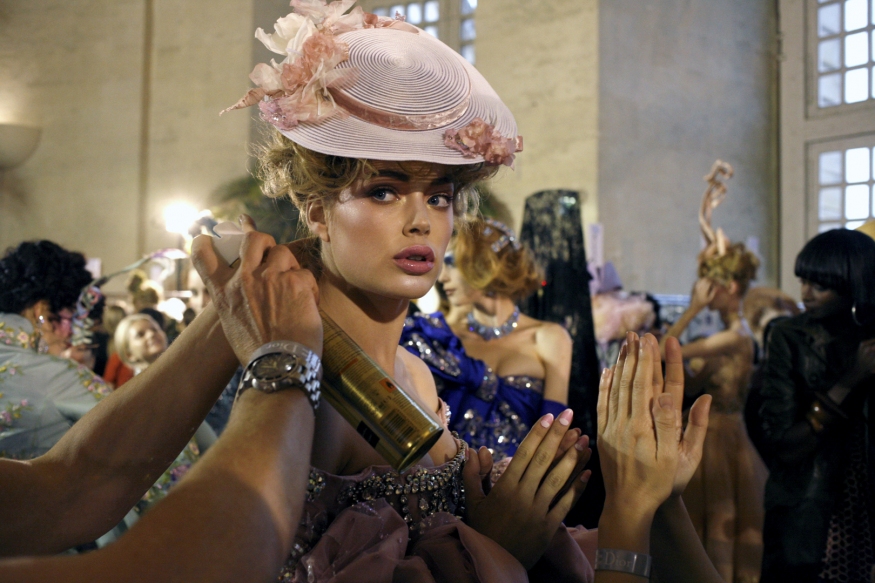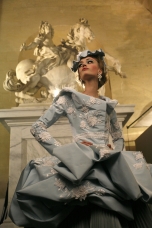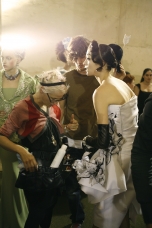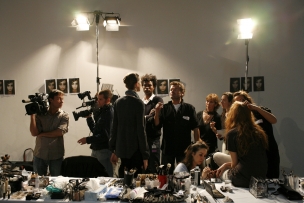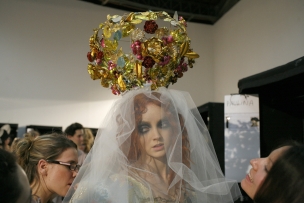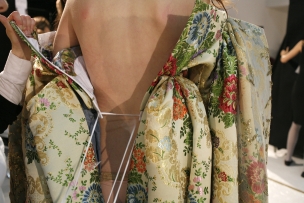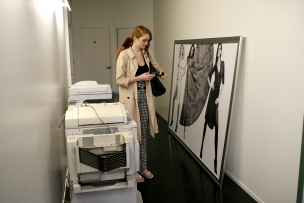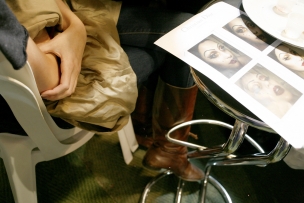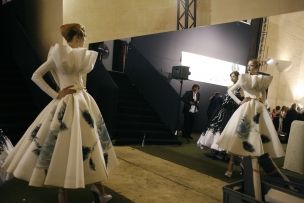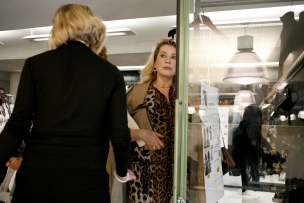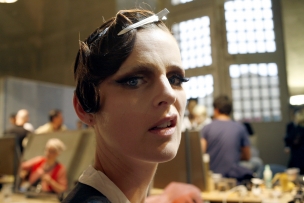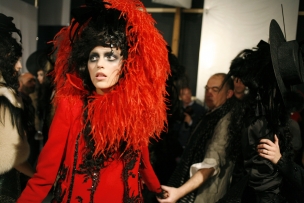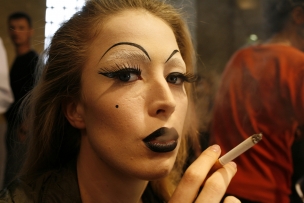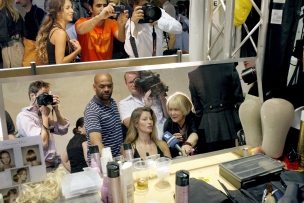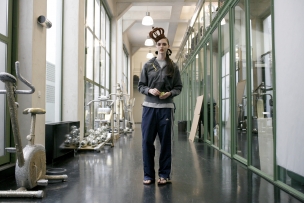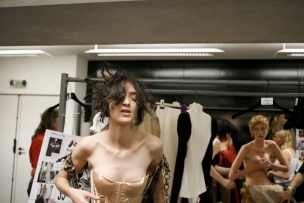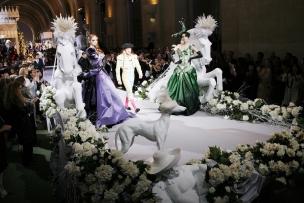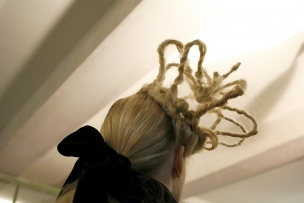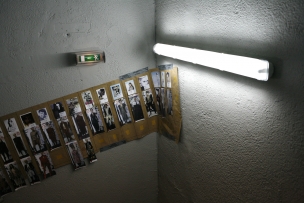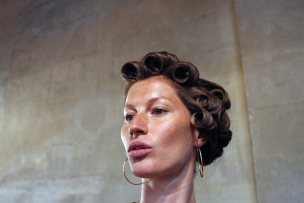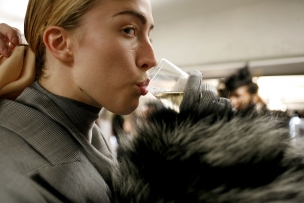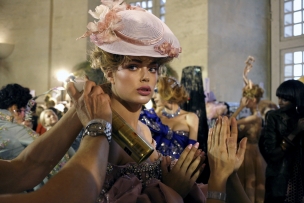Haute Couture, 2007
It’s all about the autumn-winter 2008 haute couture collections presented in Paris this summer. At the Orangerie de Versailles, Dior is showing paintings by the great masters and courtesans of the court of Louis XIV. At the Palais de Tokyo, Christian Lacroix mixes folklore, painting and theater in an Art Nouveau cocktail. At home, Jean Paul Gaultier blends the luster of Indian courts with the eccentricities of Scottish wardrobe.
Every couturier has a well-established machine. Everything happens in four stages. At the beginning it’s quiet. The models put on make-up. The famous ones arrive late. Some are accompanied by a mother or an agent. The lesser-known ones keep quiet. A hierarchy between them is already established. Most display studied expressions and fixed poses for the camera. There are bad guys and good guys. Then there’s hairdressing. Photographers from fashion magazines arrive from the previous show with their suitcases and assistants. They comment on the previous day’s parties with the models.
For the dressing the pressure is on. At this stage a photographer can be fired if the editorial staff does not maintain a good relationship with the fashion house. The models are all naked. There seems to be a rule of abstention because few photographers, 90% male, take pictures of this sequence. This is the climax and the final checks. The couturier as master of the orchestra conducts and scrutinizes his work. Shouts and music announce the start. Lined up in order, the mannequins stand in a cord across the room. I thought of the Russian parachutists waiting to jump into the emptiness of Chechnya, “Dovaï! ” replaced by “Go! ». One goes in and one goes out. They run to change their dresses. A machine made of hands, tools and lacquer gas is thrown around them to create new effigies in two minutes, which are then sent out for a spin. Everyone accompanies the designer to the podium. A round of applause and off we go for the next fashion show.
